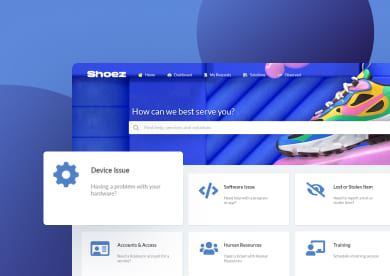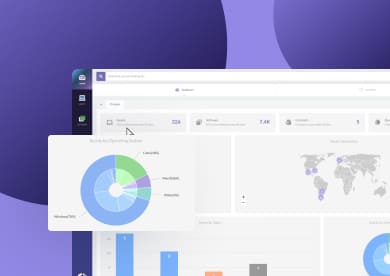A software audit is a formal review of how an organization uses and manages its software licenses. In its simplest form, it checks if the software you run is legal, properly licensed, and aligned with all compliance requirements.
Why does this matter? Because failing a software audit means legal trouble, unexpected costs, security risks, and damage to a company's reputation. In fact, according to the Chaos & Control: The State of GRC 2025 report, organizations with poor Compliance Management see reputational damage (68%), regulatory fines (65%), and revenue loss (44%) as their top risks.
In other words, software audits aren’t just about compliance — they’re about protecting your business from unnecessary costs, risks, and potential damage to your brand.
What is a software audit?
A software audit is a structured review of an organization’s software environment to verify that applications are properly licensed, secure, and aligned with compliance requirements. It typically includes taking inventory of installed software, validating licenses, comparing usage against entitlements, and identifying risks like unauthorized apps or outdated versions.
This process can be done manually with spreadsheets and checklists, but most organizations rely on software audit tools to automate discovery, reporting, and compliance checks. Modern solutions even allow audits to run periodically and automatically, ensuring continuous oversight instead of waiting for vendor reviews or annual checkups.
Why do you need to audit software?
The main reason to perform software audits is to make sure your organization stays compliant with all requirements while avoiding unnecessary risks and costs.
By auditing regularly (rather than waiting for an external review) you take control of your software environment instead of reacting to potential fines, disruptions, or security issues.
Software auditing benefits
- Ensure compliance — Verify that all software aligns with vendor agreements, internal policies, and industry regulations.
- Reduce financial risk — Avoid unexpected penalties, fines, or costly true-ups during external audits.
- Optimize license usage — Identify underused or unused licenses and reallocate them to cut costs.
- Strengthen security — Detect unauthorized or outdated applications that could expose vulnerabilities.
- Improve governance — Create clear audit trails and reports that support IT governance and decision-making.
- Increase efficiency — Automate repetitive audit tasks with software audit tools, saving time and reducing human error.
Types of software audit
Not every software audit looks the same. Depending on who performs it and why, the scope and focus can vary. Knowing the different types of audits helps organizations prepare properly and avoid surprises.
-
Internal software audit — Conducted by the organization itself to proactively check compliance, optimize licenses, and prepare for possible vendor reviews.
-
External vendor audit — Initiated by a software vendor (like Microsoft, Oracle, or Adobe) to verify license compliance. These are often mandatory and can lead to fines if gaps are found.
-
Regulatory audit — Focused on ensuring software usage complies with broader industry standards or legal frameworks such as GDPR, HIPAA, or ISO.
-
Third-party or independent audit — Performed by a third party auditor hired by the organization to get an objective view and strengthen software audit defense.
What triggers a software audit?
A software audit can be triggered by several factors, some within your control and others imposed by external parties. Understanding these triggers helps organizations anticipate audits and build a solid software audit defense.
-
Vendor suspicion or red flags — Software vendors may launch an audit if they detect unusual license activity, usage patterns that don’t match purchased entitlements, or if they suspect unlicensed deployments.
-
Contractual obligations — Many license agreements explicitly grant vendors the right to perform periodic audits, meaning an audit can be scheduled even without suspicion.
-
Regulatory requirements — In industries like healthcare, finance, or government, compliance frameworks (e.g., GDPR, HIPAA, SOX) can trigger audits to ensure that software handling meets industry standards.
-
Mergers and acquisitions — During due diligence, acquiring companies often conduct internal software audits to confirm compliance and prevent inheriting risks.
-
Internal governance — Organizations may initiate their own audits as part of IT Asset Management practices, either on a set schedule or in preparation for a potential vendor or regulatory audit.
-
Security incidents — A data breach or discovery of unauthorized software can prompt a targeted audit to identify vulnerabilities and confirm compliance.
-
Poor compliance history — If a company has previously failed audits or struggled with software audit compliance, vendors are more likely to re-audit to verify corrective actions.
“The first thing you do [when you receive an audit letter] is you say, 'Okay, is this something I should be concerned about?' Because of contractually, you may have a no audit clause, they might not even legally have a right to audit you. So you might want to read real quick before you make that quick response of, 'Hey, uh-oh, I got an audit letter. That's what they want you to do. They want you to get scared. So my first thing is to say, don't panic. You may owe them money, you may not owe them money, but they don't know as much about your environment as you do. So get your facts straight.”
Aaron Davenport, Software Asset Management specialist
How to do a software audit? The software audit process
A software audit is closely related to any other IT audit but with a narrower scope. While IT audits evaluate the entire technology landscape (from systems and networks to data and controls) a software audit focuses specifically on applications. The goal is to ensure all software is licensed, compliant with requirements, and free from unnecessary risks.
The software audit process follows a series of structured steps, many of which mirror those of an IT audit (you can find the full breakdown in our IT audit guide):
- Planning — Define the scope, objectives, and resources of the audit.
- Inventory and data collection — Identify all installed applications across your environment.
- License and compliance review — Compare actual usage against entitlements, contracts, and compliance requirements.
- Risk assessment — Flag unauthorized or outdated software and assess their impact.
- Testing and validation — Verify findings through document reviews, interviews, and audit tools.
- Analysis and evaluation — Consolidate results to identify gaps, redundancies, or compliance issues.
- Reporting — Produce a software audit report with findings, risks, and recommendations.
- Follow-up — Implement corrective actions and set controls for ongoing compliance.
18 step software audit checklist
The objective of a software audit is simple: confirm that every piece of software in your environment is properly licensed, compliant with requirements, and secure from risk. Here’s a step-by-step software audit checklist you can follow:
#1: Planning
- Define the audit scope (systems, departments, or vendors).
- Set clear objectives (compliance, cost optimization, risk reduction).
- Assign responsibilities and gather the right audit team.
#2: Data collection
- Use discovery tools to create a complete software inventory.
- Gather purchase records, license agreements, and entitlements.
- Document software versions, installations, and usage data.
#3: Compliance review
- Match installed software against licenses and entitlements.
- Check alignment with vendor agreements, internal policies, and industry regulations.
- Identify unauthorized or shadow IT applications.
#4: Risk and usage assessment
- Flag outdated or unsupported software that could introduce vulnerabilities.
- Analyze usage to spot underutilized or unused licenses.
- Assess the potential financial and security risks.
#5: Verification and reporting
- Cross-check data and interview key stakeholders if needed.
- Prepare a software audit report summarizing gaps, risks, and recommendations.
- Share findings with leadership and stakeholders.
#6: Remediation and follow-up
- Take corrective actions to resolve compliance gaps.
- Update internal policies and controls.
- Establish periodic, automated audits with a software auditing tool to maintain continuous compliance.
If you’re interested in the topic, you can always download our IT audit checklist.
Software audit examples
Sometimes definitions can feel abstract, so let’s ground this topic with a few real-world examples of software audits. These scenarios show the different situations where audits take place and what they typically uncover:
-
Internal license compliance check — An organization’s IT Asset Management team performs an internal software audit using a discovery tool to confirm that all Microsoft Office 365 licenses are assigned correctly and that no unapproved copies are installed.
-
Vendor-driven audit — Oracle initiates an external software audit after noticing unusual usage patterns in a client’s database environment. The audit reveals several instances of under-licensed deployments that require a costly true-up.
-
Regulatory audit in healthcare — A hospital undergoes a software audit as part of a broader HIPAA compliance check. Auditors review all applications handling patient data to ensure they are licensed, updated, and properly secured.
-
Mergers & acquisitions due diligence — During an acquisition, the buyer conducts a software audit on the target company’s systems. The process uncovers several shadow IT applications without proper licenses, which are flagged as financial and legal risks.
-
Security-triggered audit — After a ransomware incident, a financial services company runs an urgent internal software audit to detect outdated or unsupported applications that may have been the entry point for attackers.
Using InvGate Asset Management as your software audit tool
InvGate Asset Management gives IT teams the visibility and control they need to make software audits painless. Instead of scrambling for spreadsheets or vendor reports, you get a single source of truth for all your applications, licenses, and compliance status — always audit-ready.
InvGate Asset Management key features for software audits

-
Centralized software inventory — Build a complete, reliable catalog of all software across your environment using multiple populate methods (agents, network discovery, imports, and more).
-
Software Compliance module — Not only discover software, but also manage and track it. Detect unauthorized or unused applications, assign and recover licenses, and even calculate costs. You can also automate actions — for example, flagging or removing unapproved software the moment it’s detected.
-
Lifecycle and traceability — Monitor software status, version changes, ownership transfers, and usage logs to maintain full visibility and control.
-
Audit-ready reporting and dashboards — Generate automatic reports with all the information needed for a software audit. Combined with custom dashboards and charts, this gives stakeholders a clear, real-time view of compliance and usage.
-
Real-time alerts and notifications — Stay ahead of risks by setting alerts for non-compliance, unauthorized software, or outdated applications.
-
Wide ecosystem of integrations — Sync InvGate Asset Management with your existing stack to streamline software audits end to end. Beyond identity and access tools (Active Directory, Entra ID, Okta), it also integrates with ITSM solutions (like InvGate Service Management, Jira, ServiceNow), MDMs (Intune, Jamf, Kandji), remote desktop tools (TeamViewer, AnyDesk), and more — ensuring all systems stay consistent.
While there are dedicated Software Asset Management tools in the market, using a full ITAM solution like InvGate Asset Management gives you much more than just software tracking.
From managing hardware and SaaS to integrating with ITSM workflows, it provides a complete view of your technology landscape, helping you not only pass audits but also improve governance, budgeting, and strategic decision-making.
Ready to simplify your next software audit? Start your free 30-day trial of InvGate Asset Management and see how easy compliance and audit readiness can be.
Do you need a software audit certification?
When it comes to software audits, there isn’t a single, universal certification required to perform one. Internal IT teams, consultants, or vendor representatives can all carry out audits without needing to be "licensed auditors."
However, there are certifications and frameworks that add credibility and structure:
-
SAM (Software Asset Management) certifications — Programs like the Certified Software Asset Manager (CSAM) or Certified IT Asset Manager (CITAM) from IAITAM focus on building expertise in software lifecycle management and audit readiness.
-
ISO/IEC standards — Frameworks such as ISO/IEC 19770 set standards for software asset management and auditing practices. Organizations sometimes align with these to demonstrate compliance maturity.
-
Audit and compliance certifications — Broader qualifications like CISA (Certified Information Systems Auditor) or CRISC (Certified in Risk and Information Systems Control) are often held by professionals conducting regulatory or IT audits, which may include software auditing as part of the scope.
Do you need them?
-
For internal audits — No certification is required, but having trained staff or certified SAM professionals ensures the process is reliable.
-
For external/vendor audits — Vendors perform them with their own certified/licensed auditors, and organizations being audited do not need certification.
-
For consultants/third parties — Certifications are a plus for credibility, especially if they are offering audit services to clients.















